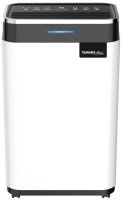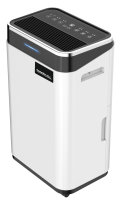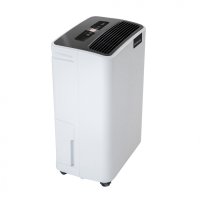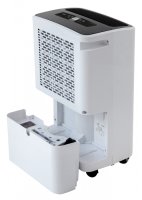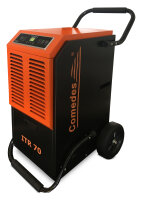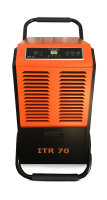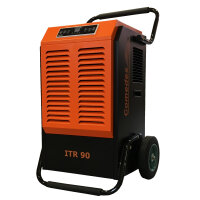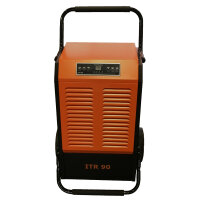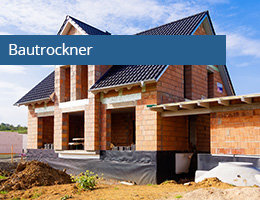Which dehumidifier for basement?
Before buying a dehumidifier for the basement, also ask yourself these questions:
- How big is the basement?
- Has there been water damage or a similar problem?
- When was the house built (brick or concrete basement, etc.)?
Tip: How to successfully dehumidify your cellar.
If the cellar is generally very cool (below 15 °C), it is recommended to heat it and dehumidify it at the same time. After a while, you can turn off both devices and repeat the procedure after a few weeks if necessary. Continuous operation of a condensation dryer is not recommended at low temperatures, because a small amount of desiccated water is matched by a relatively high power consumption. The consumption is even higher if you include the additional electricity of a fan heater.
What damage can cause damp basements?
High humidity in basements can lead to mold growth and thus pose a health hazard.
In addition, there are also very practical problems if the basement is not dry:
- Furniture warps,
- clothes get mildew stains,
- tools start to rust,
- food spoils more quickly,
- and a musty smell spreads.
In addition, damage to the building structure can occur, which in the worst case can result in immense costs. We therefore recommend that you always consult a specialist as early as possible, dehumidify the cellar and make any necessary improvements.
What causes high humidity in the basement?
1. rising damp
Occasionally, rising damp in the walls in the basement causes problems. This may have several reasons:
Missing or damaged horizontal shut-off
This barrier is usually made of stainless steel, plastic or similar materials and does not allow water to pass through. In newer houses, it is always installed as a matter of principle and thus prevents moisture from the ground from rising above the walls.
Water penetrating vertically through the side walls
In older houses, moisture can penetrate not only from below but also from the side, which is due, among other things, to the deterioration of the protective coating. Such a coating lasts between 20 and 50 years, depending on the type and quality, and then needs to be renewed.
Clogging of external drains/pipes
These include the gutter, drains in light wells or even in the area of the external access. A characteristic feature of this problem situation is that the dampness is usually very localized, i.e. only occurs in a specific area of the wall.
2. condensation humidity
Problems with condensation moisture in basements are very common, especially in summer. The reason for this is the difference between the warm outside temperature and the cool inside temperature. Warm air can store significantly more water than cold air. If the warm outside air meets the cold cellar air and the cold cellar walls during ventilation, the water condenses and sometimes even runs down the walls. A similar effect occurs with sources of moisture from inside the basement, for example after showering or when cooking.
How to prevent damp walls in basements?
Proper ventilation behavior
If the outdoor temperature is very high during the day, avoid ventilating. Instead, choose late evening, night or early morning for air exchange. You should also be careful not to leave windows open too long when ventilating. Shock ventilation is usually the better choice.
Sufficient circulation of the air in the room
If possible, basement rooms should not be too crowded. Above all, do not place large furniture such as closets directly against the wall so as not to obstruct the air flow.
Installation of a ventilation system
Many newer basement apartments already have ventilation systems. They provide a regulated exchange of air to prevent mold, mildew stains or other adverse effects caused by excessive humidity. However, ventilation systems are very rarely found in older buildings, as retrofitting is very cost-intensive.
Do not let basement rooms cool down
This should be ensured even in winter when the rooms are not regularly used. In addition, it is conducive to ventilate regularly even in the cold season, so that the slightly warmer, moist indoor air can flow outside.
What helps against the musty smell in the basement?
It is advisable to first use a dehumidifier in the cellar, which gradually draws the moisture out of the walls, books, furniture and other objects and dries the cellar space. The molds thus lose their basis for life and stop growing. Only then is the use of an air purifier useful to eliminate residual spores. In addition, thorough cleaning and extensive ventilation are essential.


